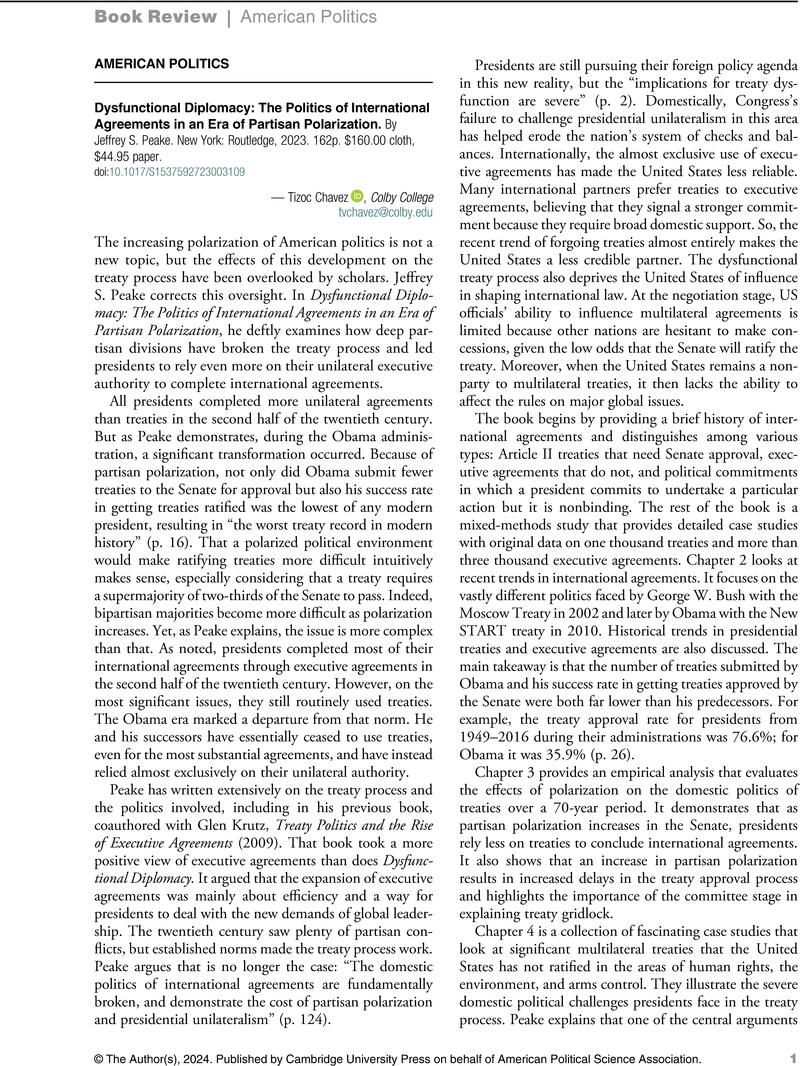No CrossRef data available.
Article contents
Dysfunctional Diplomacy: The Politics of International Agreements in an Era of Partisan Polarization. By Jeffrey S. Peake. New York: Routledge, 2023. 162p. $160.00 cloth, $44.95 paper.
Review products
Published online by Cambridge University Press: 12 February 2024
Abstract

- Type
- Book Reviews: American Politics
- Information
- Perspectives on Politics , Volume 22 , Issue 3: Special Section: Partisanship and Political Division , September 2024 , pp. 888 - 890
- Copyright
- © The Author(s), 2024. Published by Cambridge University Press on behalf of American Political Science Association


